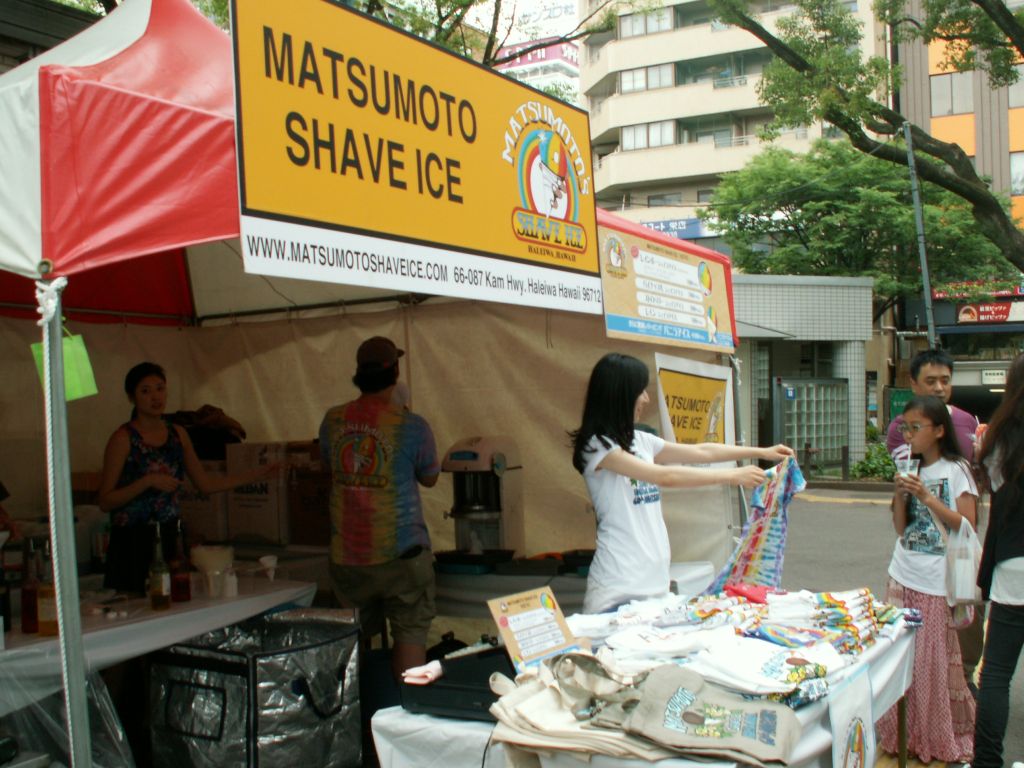In year 2000: I started my master. I studied about the dynamics of eruption and numerical models.
In this year, there were two major eruptions in Japan. "Usu" and "Miyakejima". However, I couldn't see any of these eruptions by myself. I only listened to TV news.
For my study, many seniors of our group helped me. Master's degree in Japan is two years generally. After that, I decided to work for a computer company.
2002: I started to work for a computer company. Fortunately, I could work for the systems and analysis for hazard mitigation. One of my important projects in this company was to make an educational tool "
Volcanic Simulator" for high school student (all in Japanese). So, I worked for some volcanological projects.
2003: I attended Cities on Volcanoes 3 in Big Island, Hawaii. It was a conference for volcanic eruptions and its hazard mitigation. At that time, volcanic activity in Kilauea was active and we enjoyed watching lava flows around the foot of Kilauea. I am attracted by Pele a goddess of Hawaiian volcanoes even though she is a woman!
 |
| Field trip of COV3. We were on the lava flow of Kilauea. |
2005: I decided to quit my job for challenging to study abroad. It was my sister and her husband whom affected me. They had just finished their MBA in France. I said "Wow, it must be really nice experience to study abroad. I would like to try one day".
2007: Finally I got a PhD offer from University of Geneva in Switzerland. It was fantastic to have a PhD opportunity with good financial support. At the very beginning of my PhD, I went to Ecuador for the field work with other members from Geneva and from Italy.
 |
| Cotopaxi volcano and our group of field work from Geneva and Italy. |
2008: I attended the meeting of
International Association of Volcanology and Chemistry of the Earth's Interior (IAVCEI, 2008) in Reykjavik, Iceland. At that time, I talked with many researchers from other countries, but I tended to stick to Japanese acquaintance. I was not very open to other people because I had a lot of stress by living in foreign country. I wanted to speak in JAPANESE! I didn't feel that I was sad or lonely. However, I felt frustration of communicating in foreign language at that time.
Later, I got used to live in Geneva. I enjoyed a life in Geneva because I could take good classes of ballet and found some friends and nice cafés to enjoy. Probably, the life got easier when I started to speak French.
2010: Cities on Volcanoes 6 was held in Tenerife, Spain. In this conference, I started to communicate other researchers from all over the world. I was very busy everyday for discussions. Until the last moment of the last day of the conference, I discussed with someone about my research. I thought this conference was very successful for my study and career. After this conference, I started to contact other researchers from other countries.
 |
| Columnar joint of lava like a rose flower in Tenerife island |
 |
| Discussing with other attendant of COV6 |
Year 2011 was hard time for me because I was writing my thesis. Early 2011, Japanese were shocked by the earthquake and tsunami in Japan. I guess all Japanese had somewhat mental problem even we are out from Japan. This hard period continued until very end of the year.
I canceled to attend the IUGG conference but I participated in the conference about Lagrangian modeling of atmosphere. (
Conference site is here) It was unexpectedly interesting conference!
I could meet many people working for atmospheric modeling. My presentation was
poster presentation and we discussed until midnight! I was exhausted but felt so satisfied.
I finished writing
my thesis about numerical modeling of Tephra dispersal and ballistic bombs on 30th December. I sent it to my supervisor and had a warm new year party at my friend's house.
2012: I defended my PhD! I became a doctor.
However, I had some problems of revising my thesis. And so, even though I moved to Hawaii, I couldn't enjoy my life 100%. I used my time and money for healing myself. I guess this period was very important for me because I looked myself and tried to understand. With this process, I met many great people. The land of Hawaii healed me gradually. Finally, I noticed that I love this land very much! So, you can see my posts in this blog.
This year (2013), I moved back to Japan.
Just before coming back to Japan, I stayed in Big Island with Prof. Ui (professor emeritus of Hokkaido University) and Prof. Yoshimoto (assistant professor of Hokkaido University). We had field trip together in Big Island and I could have chance to see many geological points where I wanted to visit. Actually, these two professors were supervisor and student. They are connected strongly. Although I was not in Hokkaido University, I feel strong connection with them probably because we all have a passion for hazard mitigation and geological work of volcanology.
 |
| Field trip around Green Sand Beach in Big Island with students and two professors from Hokkaido University. |
Then, IAVCEI meeting was held in Kagoshima from 20 to 24 July.
 |
| My poster for IAVCEI 2013 |
Now, I have many friends in Japan and in other countries. They all support me. Otherwise, I would not be here as a volcanologist. I feel wonderful to work as a volcanologist and I would like to say THANK YOU to everybody who supported me.
My work and my life as a volcanologist continues...



















































